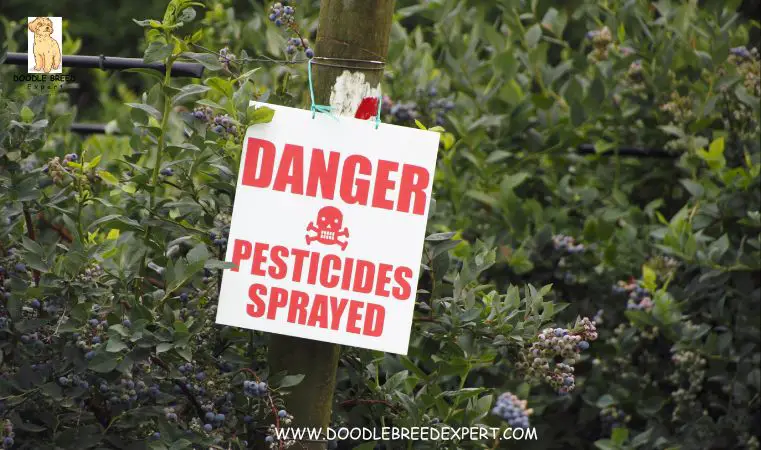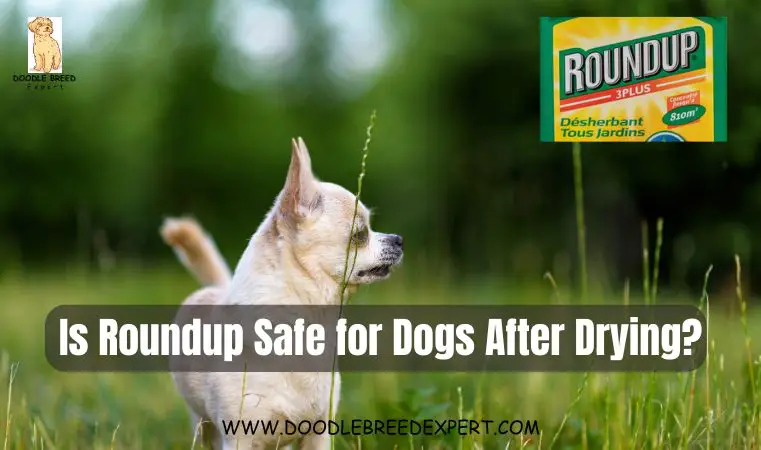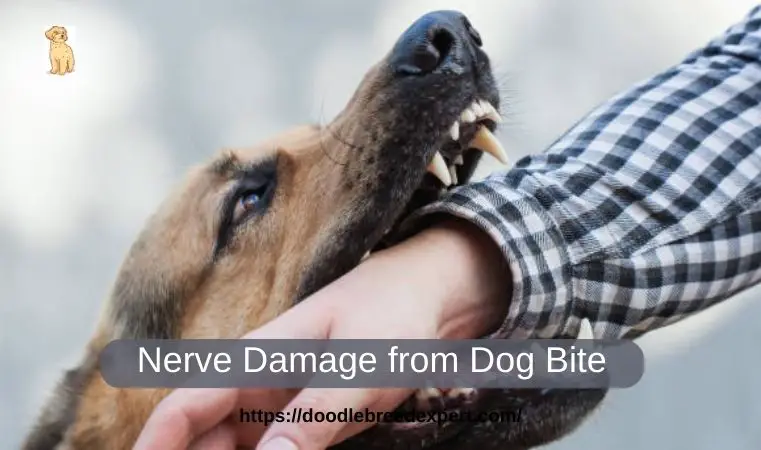Is Roundup safe for dogs after drying is one of dog owners’ repeated questions about their beloved animals’ safety. This means Roundup is designed to kill weeds. This common herbicide contains glyphosate. The question thus raises the issue of Roundup’s safety regarding the pets’ exposure, especially after drying.
Many pet owners worry about residue and potential hazards should the dog come in contact with an area treated with Roundup. Once sprayed, Roundup immobilizes quickly after drying, and the product will likely rub directly off the dog’s skin or hair upon contact. However, secondary exposure from ingestion or prolonged skin contact, such as a free-running dog’s belly, remains a potential concern.
To address such concerns, such as “Is Roundup safe for dogs after drying?”, there is a need to understand further the possibility of the health hazards dogs face because of exposure to glyphosate. It has been suggested that the dried residues are not as definite as in the case of direct exposure. Thus, being cautious and taking preventive measures such as allowing the treated surfaces to dry and using safer alternatives whenever possible may help reduce the chances of problems. In the safe use of pets around herbicides like Roundup, careful, informed judgment must be followed by responsible application.
What is Roundup?
Roundup is a well-known herbicide that is primarily applied in weed control. Its primary active component is glyphosate, but it also comprises a few different surfactants for coating, working as plant adjuvants. Roundup is used nationally in all major applications, such as agriculture, forestry, lawns, gardens, and aquatic weed control. Thus, glyphosate is the most widely used herbicide in the United States and the prime active ingredient in Roundup. Despite being an effective spray, its ingredients have raised concerns about health effects and environmental degradation.
Is Roundup safe for dogs after drying?
Even dried applications of the popular herbicide Roundup, which contains glyphosate, present a significant risk to dogs. Glyphosate is moderately poisonous to a dog, and in general, the toxicity goes down as the material dries out, although it is still striking.
Once dried, the primary concern shifts from direct skin contact or ingestion to potential ingestion through grooming behaviors. Canines, being supreme groomers, will often lick their fur or paws after walking through a treated area; this is considered an oral ingestion. It will result in gastrointestinal upset (vomiting, diarrhea) or some dogs showing more severe reactions with an inability to breathe, severe lethargy, or evidence of potential renal failure; these are very severe presentations.
Further, Roundup usually comes with surfactants and other components that increase toxicity. These chemicals may irritate the skin and mucous membranes of dogs and could cause dermatitis or allergic reactions if they come in contact with the skin of animals.
In treating an area with Roundup®, pets should be excluded until the product is thoroughly dried, preferably for several days to limit potential exposure. Store all herbicides carefully and pay close attention to caution for pets as labeled. Seek prompt veterinary attention if an exposure occurs for guidance regarding evaluation and potential toxicity management.
How Does Glyphosate Work?
Comparatively, glyphosate is a non-selective herbicide and may be generally effective in killing all species of plants. Glyphosate works based on inhibiting the Shikimate enzyme pathway critical in the bio-synthesis of most essential amino acids, phenylalanine, tyrosine, and tryptophan. All vascular plants, algae, fungi, and bacteria possess these pathways, whereas higher animals do not; hence, glyphosate is not toxic to animals. However, glyphosate is detected in the body of dogs at about 30 times higher than in humans, clearly signifying that the levels of exposure or metabolic processes put in place could be quite different.
In addition to the interference in amino acid biosynthesis, glyphosate chelates or acts as a blockage in the utilization by the plant of, among others, critical nutrients like calcium, magnesium, manganese, zinc, iron, copper, nickel, cobalt, boron, molybdenum, selenium, potassium, and so on. Hence, the plant becomes deficient in those nutrients and is, therefore, immuno-compromised, the closest thing a plant could get to an AIDS condition, eventually dying.

What is the likelihood of your dog getting exposed to Roundup or Glyphosate?
The likelihood that your dog has been exposed to Roundup, or the more toxic ingredient, glyphosate, is likely high. Studies from California from 1993-1996 and 2014-2016 demonstrate a marked histogram shift to the right; that is, the number of people showing glyphosate, indicating exposure, has increased significantly over time with glyphosate use. Research suggests that at least 93% of the population detects urinary glyphosate in humans. From the University of California, San Francisco, the approximation is 3.096 parts per billion (PPB), with the highest concentrations being in children and residents of the Midwest/West region.
Provided the above findings, it could be visible that glyphosate environmental exposure is apparent. This significantly impacts dogs since, as pilot research from H.R.I. Labs said the levels of this glyphosate in canines are 30 times higher than in humans. This higher level is relevant in dogs who might be usually exposed to higher levels of glyphosate more intensively through direct contact with glyphosate-sprayed surfaces such as lawns, gardens, and parks, and it is expected that they play, sniff, and lick them. Additionally, dogs can also become exposed to products containing glyphosate via the oral route, from eating grass or being exposed to contaminated drinking water, through the soil, or generally through their exposure from licking their skin and paw surfaces.
This becomes a serious public health issue when discussing the impacts of glyphosate exposure. A recent study published in the U.S. showed that when humans are exposed to glyphosate, their chances of developing cancer are increased by 41%. It is not far-fetched that similar or even higher risks might be realized in humans or even dogs with much higher levels of exposure than humans. Therefore, the odds are very high that your dog has already been or will come into direct contact with Roundup or glyphosate, considering fairly serious health implications.
Can Roundup and lawn chemicals cause cancer in dogs?
Roundup and lawn chemicals have been connected to an increasing incidence of dog cancer. At this point, approximately 50% of pets get canine cancer at a rate that’s rising rapidly. In studies done by Tufts University, the association between the chemical glyphosate, the main ingredient in Roundup, had a 70% increased risk of lymphoma from lawn chemicals over six years.
There’s substantial evidence that Roundup is an endocrine disruptor, damages D.N.A., and is a cell and gut bacterial killer. A 2013 paper described how lawn chemicals indeed were found to elevate bladder cancer risk in dogs. Still, even in dogs in non-lawn-chemical-treated households, glyphosate was present in the urine, evidence of extensive environmental exposure.
The World Health Organization has put it in a group of probable carcinogens, while California named it in 2017 a known human carcinogen under Proposition 65. That said, the U.S. Environmental Protection Agency has insisted on the safety of glyphosate under its present form, even after being dragged to court in 2022 after establishing that glyphosate poses some potential health problems. The then U.S. Assistant Attorney General for the Civil Division, Margaret Hamburg, who later served as the Commissioner of the U.S. Food and Drug Administration, admitted the possible carcinogenic nature of glyphosate, especially if taken in small doses for a very long time.
The strong association of lawn chemicals with canine cancer should be a reason for their re-evaluation. As more detrimental effects of these substances come to light, pet owners and regulatory commissions alike must take some time to put the damage into perspective against the benefit found in weed control. Reducing or stopping the use of products such as those containing glyphosate will be one of the most important contributions to saving the health and lives of dogs.
What kind of health risks does exposure to glyphosate pose?
Exposure to glyphosate is linked to some serious health issues:
- Alzheimer’s Disease: Glyphosate triggers oxidative stress that mimics the way this oxidative objectives disease presents and may, therefore, be one more path through which this other disease develops.
- Autism: There is a proposed relationship between the development of autism and the presence of gastrointestinal dysbiosis. The researchers assume that this may turn out because of glyphosate exposure.
- Birth Defects: Glyphosate can block pathways of vitamin A, which, even though in small amounts, are required for proper development of the fetus, thus increasing congenital disabilities.
- Brain cancer: Exposure to glyphosate has caused an increase in brain cancer incidence.
- Cancer: Higher cancer rates have been reported in locations that experience increased use of Roundup. A survey published in the Environmental Research Journal reported that dogs resided at a 70% higher risk of suffering from malignant lymphoma if they lived in households that used pesticides.
- Cardiovascular Disease: Glyphosate is affecting the biosynthesis of amino acids. This effect is related to increased risk for cardiovascular disease.
- Liver Diseases: In combination with low concentrations, glyphosate causes disturbances in the function of cells in the liver.
- Kidney Disease: High incidences of kidney failure among agricultural workers in Central America, Sri Lanka, and India are probably due to glyphosate exposure.
- Reproductive Problems: Glyphosate causes impairments in sperm number; testosterone levels at puberty are lowered, impacting reproductive health.
- Leaky Gut: Glyphosate induces severe tryptophan deficiency disorders, leading to inflammatory bowel disease and impairment of nutrient absorption.
Indeed, health-related issues such as those above signify the potential hazards related to exposure to glyphosate. The evidence linking glyphosate to a wide array of diseases and conditions emphasizes the need for careful consideration and regulation of its use. The growing body of research suggests significant risks to human health and animals exposed to glyphosate in their environment.
Is glyphosate everywhere?
Walking through the grass isn’t the only way your dog is exposed. People spray weekly, unlike days of yore. More people are treating their lawns with Roundup because the companies have successfully sold this as the perfect panacea. Your dog is directly dosed with glyphosate daily via ingestion/ respiration/ and more exposure walking and drinking the contaminated product. Increased – Application and G.M.O. Sequencing of Glyphosate: Widespread use of Roundup Usage followed upon the heels of the incremental options for Roundup in genetically modified crops. These have been consumed globally by approximately 20 billion pounds of glyphosate (15-fold volume since 1996 when Roundup Ready crops were first introduced).
Initially, the Roundup Ready crops were just cotton, maize, and soybeans. Since 1996, the commodities that are genetically engineered have increased in number for:
- Corn: 88% of U.S. corn planted is genetically modified or Roundup Ready.
- Soy: 93% of soybeans are genetically engineered. Soy appears on ingredient labels such as lecithin, tocopherols, vitamin E, oils, and proteins.
- Cottonseed: 94% of cottonseed, used to produce vegetable oils, is G.M.O.
- Alfalfa: Nearly all alfalfa in the U.S. is G.M.O., accumulating in animal diets and meat consumed by dogs.

Other crops to include in the modification are potatoes, squash, rice, apricots, flax, tomatoes, and beets. What used to be considered safe, naturally grown foods is not anything other than a commodity nowadays being exported. Now, more and more commodities are being made Roundup Ready each year. Roughly 70% of any manufactured human foods contain G.M.O.s. It seems likely that pet stores contain a.
However, glyphosate is not restricted only to G.M.O. crops. Roundup is widely used on non-GMO crops, too, including wheat, barley, oats, legumes, peas, flax, rye, buckwheat, millet, beets, and potatoes, to hasten the harvesting and process them to go dry – a practice called desiccation, Or pre-harvesting. There is one further negative point about these organic crops getting hitched as well. This leads to the introduction of glyphosate in foods labeled as non-GMO or organic. I believe This preharvest practice may be responsible for the increase of glyphosate residues in human urine twofold over the past decade.
Read Also: Is TruGreen Safe for Dogs?
Is There Roundup in Dog Food?
Anthony Samsel and Stephanie Seneff, Boston-based glyphosate researchers, ran some tests on a small sample of pet foods. The results showed that glyphosate was detected in every food sample tested. Regarding glyphosate levels in dog food, kibble was found to have over 100 times more glyphosate than any commercial raw dog food being sold in the market.
Unfortunately, feeding your dog raw food – either home-prepared or commercially bought — does not entirely remove the risk of glyphosate occurrence in meat and bones. Glyphosate may not, in clear view, appear on this menu, but it is paramount to remember that the livestock and other animals used in these diets are typically fed with soy and corn. Even grass-fed animals could be provided the chance to feed on glyphosate-treated maize stubble fields.
If you still aren’t using organic grass-fed meat and bones to feed your dog, then your poor pet is a prime candidate for exposure to glyphosate. This will happen for two reasons: Glyphosate can replace a part of the G.M.O. metabolic puzzle, fitting in at the hydroxyl portion, acting as if it were glycine, and has an excellent affinity for calcium.
The legal tolerance of the E.P.A. for meat and derivatives of beef is five ppm (parts per million). Most of the commercial raw pet foods were tested by H.R.I. Labs and their glyphosate concentrations were found to be five ppm as well. On the other hand, the concentrations in kibble were 200 to 660 ppm.
Giving your dog a raw diet is thus much safer, and one must use grass-fed meats and bones whenever possible.
Is Roundup safe?
The active ingredient that brings into question the safety of Roundup, glyphosate, is related to other potential risks of using the substance. So, even though the E.P.A. has classified Roundup as safe, the International Agency for Research on Cancer, a part of the World Health Organization, has categorized glyphosate as a “probable human carcinogen.”
While the direct link between exposure to glyphosate with long-term use and non-Hodgkin’s lymphoma has already been established, it was posited that its long-term, high-level exposure in other studies generally has effects on the unborn baby in a pregnant woman and norms in the disturbance of normal flora in the gut.
Signs such as skin irritation upon contact can be seen with short-term exposure. At the same time, inhalation of glyphosate can lead to symptoms including asthma and irritation of the nasal passages and throat. Swallowing glyphosate can burn the mouth and throat, induce symptoms of nausea, vomiting, and diarrhea, and, in such amounts, may even cause fatality.

Glyphosate Regulations and Roundup Lawsuits
The United States legally controls the use of glyphosate so that the residue of this pesticide in foods does not exceed a specific limit set by the E.P.A. The E.P.A. establishes tolerance levels for use through health-based risk assessments. For example, in maize, soy, grains, and other domestic ingredients, tolerance has been expressed. This the F.D.A. enforces through monitoring tolerance of the same.
Although glyphosate is not banned nationally in the United States, some of its particular states and cities have set restrictions on it. Some countries, such as Germany and Saudi Arabia, have completely banned glyphosate-based products.
Bayer’s glyphosate-based product, Roundup, has claims associated with it in its logo, connecting it to incidences of non-Hodgkin lymphoma in several litigations. Bayer, with claims forming billion-dollar-plus settlements, is currently experiencing thousands of consolidated cases in multidistrict litigation. Bayer has said it will ban Roundup in every U.S. residential market by 2023, following litigations stating multiple claims associated with its Roundup product linking it to incidences of non-Hodgkin’s lymphoma. Over halfway through 2023, Roundup products still have not followed the order, even though the number of cancer risk labels remains famous for weed control in agriculture, backyards, and public spaces.
Roundup Residue and Drying
Is Roundup safe for dogs after drying? Typically, Roundup dries down after application from a few hours to days, usually based on factors like temperature and humidity. At such times, glyphosate adheres to treated surfaces with sticking features like leaves, soil, or plant material.
Safety After Drying: Is Roundup safe for dogs after drying?
Whether or not Roundup is safe for dogs after it dries depends on the following variables:
- Residual Glyphosate: Residues of the toxic herbicide may be left even after drying on treated surfaces. With licking of the paws or fur, residues are ingested, which are likely present because the licked places probably got into contact with treated surfaces, which are usually sprayed with toxic substances, especially when still wet.
- Duration of Toxicity: Glyphosate is reputed to persist on surfaces for a short duration but is purportedly active for some days to weeks, particularly in the presence of optimum environmental circumstances.
- Risk Mitigation: Continue keeping dogs off treatment areas until glyphosate residues have likely degraded or been washed away by rain or irrigation after drying, continuing to reduce the potential risk of exposure.
Conclusion: Is Roundup safe for dogs after drying?
Is Roundup safe for dogs after drying? Although Roundup is quite a handy killer of weeds, it should not be used loosely on a lawn whenever there is a dog or another pet around; it has to be applied with full responsibility, following all safety precautions and knowing the danger of Roundup primarily to avoid exposure of said pets like man’s best friend, the dog.
By incorporating this knowledge into their empowerment, pet owners and gardeners should make informed decisions about dynamics in the effectiveness of Roundup, the active ingredients in substances like glyphosate, and the precautions that must be taken to keep pets safe. By balancing the needs of weed control with the importance of pet welfare, we can create healthy and safe environments for each living inhabitant.
Roundup can be safely used around dogs if applied and maintained correctly. Still, diligent awareness and discretion about preventive measures are probably essential to show an increased danger of risks from potential exposure to glyphosate during and following drying.
References: Is Roundup safe for dogs after drying?
- Blanco, D., Blanco, D., & Blanco, D. (2022, January 8). Glyphosate In Dog Food: The Hidden Ingredient That Can Harm Your Dog. Dogs Naturally – Natural Dog Health and Nutrition. https://dogsnaturallymagazine.com/the-hidden-dog-food-ingredient-that-can-harm-your-dog
- Cancer deaths double in Argentina’s GMO agribusiness areas. (2017, November 17). The Ecologist. https://theecologist.org/2014/aug/24/cancer-deaths-double-argentinas-gmo-agribusiness-areas
- Henriques, J., Henriques, J., & Henriques, J. (2023, October 2). GMOs In Dog Food. Dogs Naturally – Natural Dog Health and Nutrition. https://dogsnaturallymagazine.com/why-your-dog-is-probably-eating-gmo-food-and-shouldnt
- https://govinfo.gov/content/pkg/CFR-2010-title40-vol23/pdf/CFR-2010-title40-vol23-part180-subpartC.pdf
- Henriques, J., Henriques, J., & Henriques, J. (2023a, September 29). Is Roundup Safe For Dogs? Dogs Naturally – Natural Dog Health and Nutrition. https://www.dogsnaturallymagazine.com/is-roundup-safe-for-dogs/






